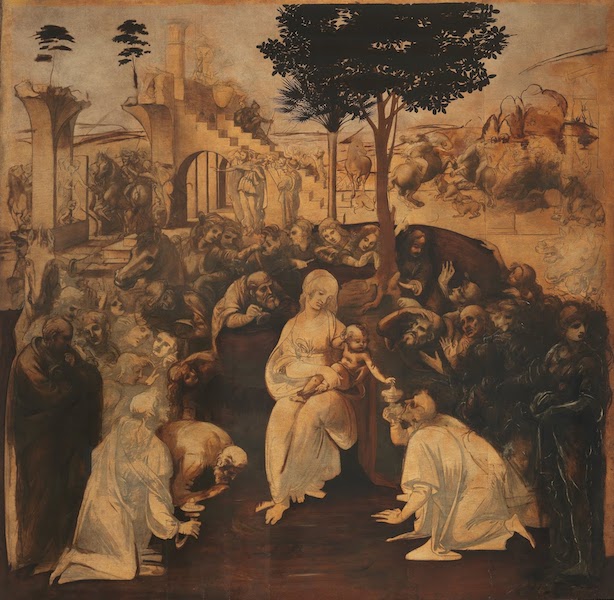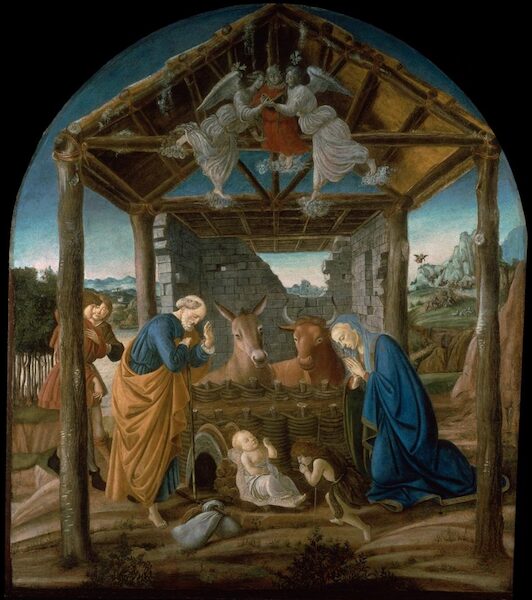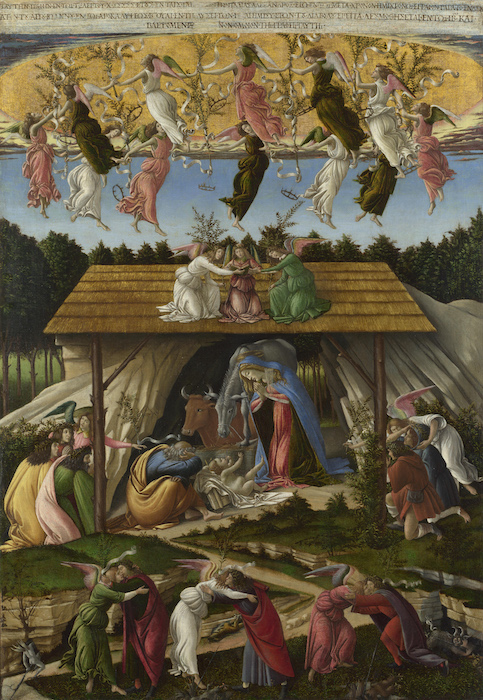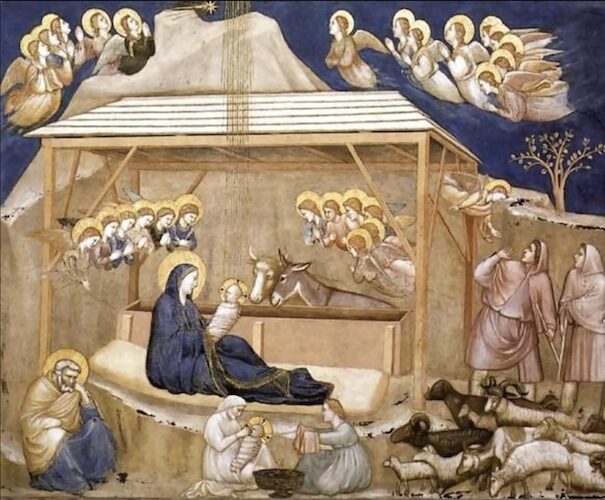In the realm of Christmas art, a rich tapestry of symbolism emerges as artists deftly weave sacred elements into their festive creations. This exploration delves into the profound use of Christian iconography, namely the cross, fish, and alpha omega, as artists masterfully incorporate these symbols to infuse depth and meaning into the visual narratives of the holiday season.
The Cross: Emblem of Redemption
At the heart of Christmas art lies the ubiquitous symbol of the cross, an emblem of profound theological significance. Artists skillfully integrate this symbol, not merely as an ornament, but as a poignant reminder of the redemptive narrative central to the Christian faith. The intersection of the horizontal and vertical beams, embodying earthly and divine realms, often finds its way into nativity scenes, where the birth of Christ becomes inseparable from the ultimate sacrifice on the cross.
Consider the powerful juxtaposition in Renaissance masterpieces. Where the infant Jesus rests in a manger. Bathed in celestial light that forms an ethereal cross-shadow. The subtlety of this symbolism serves as a visual prelude to the transformative journey that awaits the Savior.
The Ichthus: Through Christmas Narratives
As the Ichthus, or fish, gracefully swims through the currents of Christmas art, its symbolism is deeply rooted in early Christian history. Artists draw inspiration from this ancient symbol, representing Christ, to infuse their works with layers of meaning. The Ichthus often appears as a discreet yet deliberate detail, adorning the periphery of a nativity scene or subtly integrated into the background.
Contemporary artists, too, embrace the Ichthus, incorporating its sinuous form into abstract renditions of the Nativity. The fish becomes a silent witness, navigating through the visual narrative, a clandestine acknowledgment of Christ’s presence in the humblest of settings.
Alpha Omega: The Eternal Bookends of Christmas
In the exploration of Christian iconography in Christmas art, the alpha omega emerges as a captivating symbol, encapsulating the eternal nature of Christ. The first and last letters of the Greek alphabet. Alpha and omega signify the beginning and the end, embodying the timeless essence of the divine.
Artists employ alpha omega as a visual refrain, an elegant punctuation mark within their compositions. Whether subtly inscribed within the folds of angelic robes or boldly etched into the architecture of a nativity scene, this symbol becomes a contemplative focal point. The juxtaposition of the alpha omega with the vulnerable Christ-child emphasizes the cyclical nature of the Christmas narrative. An eternal story unfolding within the finite constraints of human existence.
Iconography in Christmas Art
Let’s delve into specific famous artistic examples that showcase the incorporation of Christian symbols – the cross, fish, and alpha omega – in the context of Christmas art. These artistic examples showcase the nuanced ways in which renowned painters seamlessly wove Christian symbols into their depictions of the Christmas story. Adding layers of meaning and inviting viewers to engage in a contemplative exploration of faith and redemption.
“The Adoration of the Magi” by Leonardo da Vinci (1481-1482)

Leonardo da Vinci’s masterpiece, “The Adoration of the Magi,” is a prime example of the subtle integration of Christian symbols into a Christmas narrative. Amidst the bustling scene of the Magi presenting gifts to the infant Jesus. One can discern the presence of the cross in the background. The beams of the cross cast a shadow over the holy family, symbolizing the future sacrifice of Christ. Da Vinci, with his unparalleled skill, intertwines the joy of the Nativity with the somber reminder of the redemptive mission that lies ahead.
“The Nativity” by Sandro Botticelli (c. 1475)

Botticelli’s “The Nativity” offers a poignant portrayal of the Ichthus, or fish symbol, within the context of the Nativity scene. In the background, a river flows, and within its waters, a fish glides serenely. This discreet yet deliberate inclusion of the Ichthus underscores the profound theological underpinnings of the scene. The fish, an ancient symbol of Christ, serves as a metaphorical companion to the newborn Savior. Emphasizing the divine nature of the Incarnation.
“The Mystical Nativity” by Sandro Botticelli (c. 1500-1501)

Another work by Botticelli, “The Mystical Nativity,” presents a rich tapestry of symbols, including the alpha omega. In this enigmatic composition, angels and demons engage in a celestial battle while the Holy Family occupies the central space. The alpha omega appears prominently on a floating banner held by angels, transcending the earthly chaos below. This symbol serves as a visual anchor, reminding viewers of the eternal significance of the Nativity amidst the tumultuous clash of supernatural forces.
“The Nativity at Night” by Geertgen tot Sint Jans (c. 1490-1495)

Geertgen tot Sint Jans’ “The Nativity at Night” masterfully integrates the cross into the atmospheric elements of the composition. The heavenly light that bathes the Holy Family takes the form of a luminous cross. Casting its radiant glow upon the humble stable. This celestial cross not only illuminates the scene but also serves as a celestial announcement of the divine nature of the Christ-child. The artist employs the cross as both a source of light and a symbol of divine presence.
“The Nativity” by Giotto di Bondone (c. 1303-1305)

Giotto’s “The Nativity” exemplifies the artist’s ability to infuse simplicity with profound symbolism. Here, the Ichthus appears subtly on the edge of the manger, near the Virgin Mary’s feet. The fish, barely noticeable upon first glance, invites contemplation on the deeper theological meaning of the scene. Giotto’s choice to incorporate the Ichthus serves as a testament to the enduring power of this symbol in conveying the essence of Christ’s identity.
A Symphony of Sacred Imagery
In the realm of Christmas art, the integration of Christian symbols transcends mere aesthetic embellishment. It becomes a harmonious symphony of sacred imagery. The cross, fish, and alpha omega, meticulously woven into the visual narratives. Elevate these artistic creations beyond the superficial trappings of the holiday season. Artists, as custodians of profound symbolism, invite viewers to embark on a visual pilgrimage. Where the sacred symbols of Christmas beckon them to contemplate the enduring mysteries of faith and redemption.